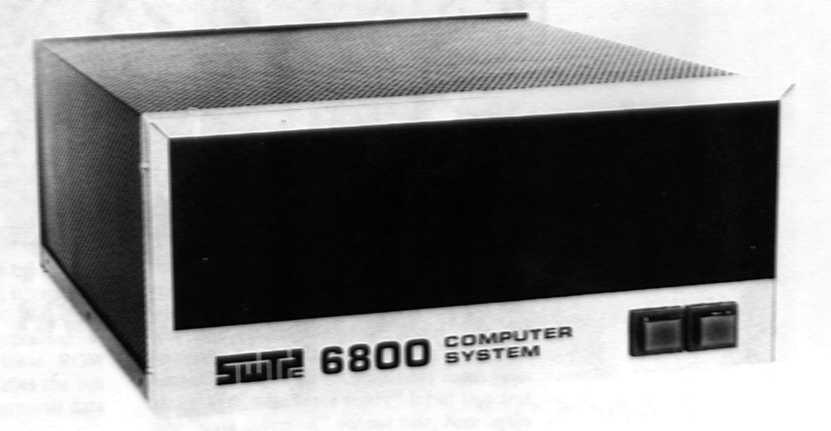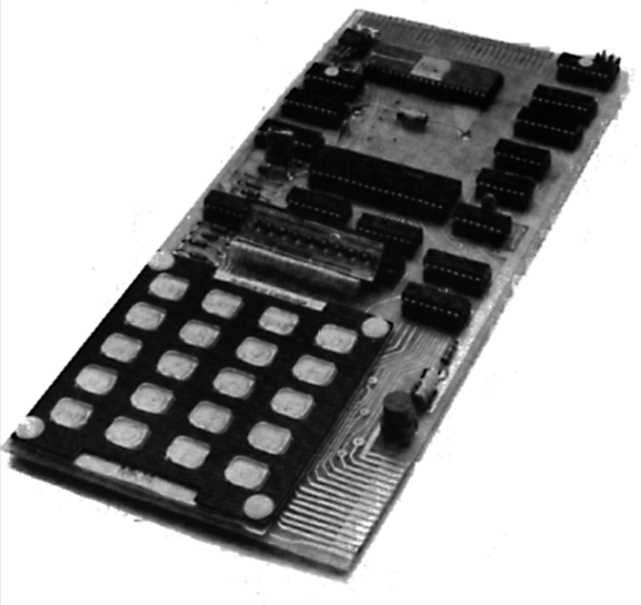| The UK 1970s Big Board Computers |
| Written by Historian | |||
Page 1 of 2
The Problem - What Do You Want A Computer For?In the United States the personal computer could afford to be big and semi-professional, if not quite fully professional. The equivalent of the early US personal computer in the UK, and more or less from the word go the most popular, was a cheaper version in the form of the SWTP 6800. It looked like the more famous Altair - the world’s first personal computer - but it was very much built down to a price.
The SWTP - sort of looked like a computer but it didn't have flashing lights.
The SWTP range started the personal computer revolution in the UK but it wasn't enough to get computers into everyone's hands - it was too expensive. You may think that it was cheap enough at £275 but you are ignoring not only inflation but the number of other similarly priced units you needed before you had something that you could use. The minimum price for a usable system was much closer to £1000 and this put it out of the reach of the casual buyer - being about £4000 or about $6,000 in today's currency. You had to know what you wanted a computer for to justify the cost. As a result most of these early “large” machines were bought by people with business uses in mind and most of them certainly weren’t “home” computers in any sense. Of course the people who bought them were enthusiasts and they did play with them but their playing had to be justified by some sort of pay off. If you were simply enthusiastic about computers then persuading someone else (or yourself) that £1000 was a good investment wasn’t easy. Remember the world wasn’t full of people using small computers. This was pioneering and there wasn’t the huge range of applications software to choose from. Word processors were thin on the ground and most were little more than text editors, games were text only, spreadsheets hadn’t been invented and databases were something you tried to put together using Basic. In fact about the only solid foundation was the Basic language - if you could program in Basic then perhaps you could make the machine do something useful or fun but this was very much a program it yourself era. If something complete and proven like the current PC was available then yes people would have been prepared to find the money but the value of a PC wasn’t at all obvious. The Microprocessor Trainer - The Cut Down AlternativeNot having a good reason to buy one still didn’t stop people drooling over the ads and trying to own a machine at a price that didn’t need a consultation with the bank manager. This is where the simple microprocessor "trainers" came in. In the early days processor companies like Motorola made trainers or development systems available so that engineers could try out designs. These trainers were very basic in that they usually only had a hex keyboard and display and not much in the way of memory. The engineers were expected to use most of the PCB to build their own circuits to control washing machines or whatever. They really weren't intended to be used to develop software and most of them had little more than a ROM based code loader. If you could buy a compiler it generally ran on a minicomputer and you were expected to simply upload the code using paper tape or hand key it in. Even though they were so reduced in function they were still far too expensive and under-supported to make good choices for the enthusiast but they did provide a model for more innovative companies to do something similar.
The Key Pad MachinesThe microprocessor trainers inspired the idea that there might be a market for a microprocessor system that had a simple key pad and a calculator style LED display. From the states we had the KIM 1 and a little later the SYM-1 which were based on the 6502 but there were many more home grown examples. The MK14 and the SCAMP were both based on the National Semiconductor SC/MP processor - not very much used elsewhere but very cheap.
The MK14
The MK14 (1978) is a superb example of just how low these products went to achieve a rock bottom price although it was quite a late arrival on the scene. It was made by “Science of Cambridge” which was a thinly disguised “Clive Sinclair” company. It metamorphosed into Sinclair Research (1979) soon after Sinclair Radionics went out of business and went on to produce the ZX family and the Spectrum. So in this sense the MK14 was a forerunner of the Spectrum and similar machines. The MK14 kit consisted of a single PCB with a membrane Hex keypad on the lower half and eight seven segment display functioned as the output. The memory was a "huge" 512 byte PROM containing a simple executive program and 256 bytes of RAM. The executive allowed you to enter an address in Hex, then enter a data byte as two more Hex values. Once you had entered a program byte-by-byte in this way you pressed “Go” and watched the eight digit display show you the result. As you can imagine programming was very limited and thinking up something that was impressive was a big problem. All users of such systems were adept at making words up from the few symbols on a Hex display - even if it involved turning the display upside down. Flashing displays and symbols moving from one side to the other very slowly were the order of the day. It was very frustrating to have a general purpose computer in you hand an yet not be able to make it do anything much because it didn’t have any I/O facilities. Most MK14 users ended up dreaming of adding peripherals such as a full keyboard and a TV display but most just played with the few example programs in the manual. You may think that no one would buy such a machine but they did because it was a relatively risk free £39.95 (around $50). A lot of people learned a lot about the inner workings of microprocessors courtesy of the MK14 and similar products - if only there was something like it on the market today! It eventually sold 50,000 units.
<ASIN:0141000511> <ASIN:0316491977> <ASIN:0060926945> <ASIN:0470294191> |
|||
| Last Updated ( Thursday, 12 November 2020 ) |


